Nothing Like the Real Thing
Gail Gregg is an artist/writer living in New York City. She is also a graduate of the New York Academy of Art. Gail made an extensive effort to interview artists, administrators and models from the Academy for her recent article, “Nothing Like the Real Thing†in ARTnews magazine. Featured in the article are Academy instructors Margaret Bowland, Judy Fox, Will Cotton, models Christophe Nayel, Alan and Morgan Williams, and others.
The art world appears to be catching up.
-Peter Drake
The practice of drawing from life models is growing in popularity
by Gail Gregg
 |
| Philip Pearlstein, Model with Mickey Mouse on Unicycle and Wicker Chair, 2009. ©PHILIP PEARLSTEIN/COURTESY BETTY CUNINGHAM GALLERY, NEW YORK |
Even in our image-drenched era, when Photoshop, 3-D computer modeling, and virtual reality have changed the way we look at the world, the centuries-old activity of observing the human body and translating it to paint, paper, or plaster continues to flourish.
In private studios, community centers, clubs, classrooms, and even the local pub, artists around the world still gather to work from live models. As cultural critic Wendy Steiner says in her newly published The Real Real Thing: The Model in the Mirror of Art, “At a time when virtually everything is virtual, art is attempting—earnestly, bemusedly, wryly—to return us to the real.â€
The Internet is in part responsible for the vitality of this traditional activity, which originated in the 16th-century art academies of Rome. The Internet has enabled artists to find each other, to organize groups, and to hire models with the click of a mouse. You can take life-drawing “classes†on YouTube; download live-model, 360-degree-rotation photographs; or participate in such online communities as TheGreatNude.tv or Barebrush.com—where potential members are admonished that the “nude is an unclothed or partially clothed human being. No denuded trees, stark buildings, leafless flowers, please.â€
For many artists engaged in working from life, though, the “return to the real†has been a lifelong struggle. For decades, many art colleges and university art programs have offered only introductory life-drawing courses, often taught by abstract artists who have never studied anatomy themselves. As New York painter Margaret Bowland says of her experience in the 1970s, “You literally couldn’t paint the figure. I wanted to learn how to draw a hand, and my painting teacher asked us to make a drawing of the fourth dimension.†At Yale during that same era, sculptor Judy Fox remembers that -“figuration was pretty much derided.â€
This training void has led countless figurative artists to seek out remedial instruction at such institutions as the Art Students League of Denver, the Pennsylvania Academy of the Fine Arts, or the New York Academy of Art, where academic dean Peter Drake reports a record enrollment of 120 graduate students, even during the recession. “We’re turning people away,†he says.
Will Cotton is one such artist. After completing his undergraduate training at Cooper Union, he studied life drawing at the New York Academy, in 1987 and ’88, and now teaches there as a senior critic. Though his high-camp compositions are all about fantasy, he wants his subjects to feel as “alive and believable†as possible. “I have no ability to work from my imagination,†Cotton says. “Whatever I’m painting has to be in the studio. What that means to me is models posing, props, and maquettes.â€
Many artists compare working from a model to meditation, another activity that requires intense observation and focus. Some are fascinated by the intricacy of the human body, others by the way light and shadow can make it almost abstract or by the technical challenge of training the hand to render what the eye sees.
For Philip Pearlstein, who has been painting realistic nude “still lifes†since making an abrupt switch from abstraction in the late 1950s, working from life can be a “Zen-like experience.†He says, “I learned early on that you can’t rely on knowledge of anatomy. One of the things that’s exciting is that you have to make decisions. Every time the model breathes or moves, things change.â€
Elizabeth King, a sculptor who teaches at Virginia Commonwealth University, agrees. “You discover the body again each time you depict it—its strangeness is made new to you all over again.†Working from the model, she says, “involves a huge amount of eye-hand judgment, spatial judgment, judgment about form.â€
And Steve Mumford, who travels with his watercolors to Afghanistan and Iraq to record the wars, finds life drawing an antidote to the urgency of working as a combat artist. “I always wish we could have one pose for the whole session, to really look,†Mumford says of the drawing group he attends. “The closer in you get, the more there is to look at.â€
Central to this activity, of course, are the models themselves, many of whom begin posing to pay the rent between acting or dancing gigs. But for those who are satisfied with the fees ($18 to $30 an hour), are comfortable disrobing in front of strangers, and can learn the art of the gesture pose (a kind of slow-speed dance movement) or the trick of holding an uncomfortable twist or turn for 20 minutes at a time, sitting for artists promises singular rewards. These models speak of the gratification of appearing in a work of art, the friendships that sometimes result from modeling sessions, the satisfaction of watching students learn anatomy, and a sense of freedom and self–invention that can come with the job.
Claudia Hajian considers modeling as a full-time occupation. Much in demand at the New York Academy, the Art Students League of New York, and Spring Studio, Hajian is a former geography teacher who left teaching five years ago and began posing while she sorted out her future. Quickly, though, she decided that modeling was her true calling—a calling she celebrates on her blog, Museworthy. “I feel much more appreciated and valued as an artist’s model than I did at any other job,†Hajian says.
In Denver, model Kirsten Dean says she began modeling because she “just loves being in the presence of artists.†Christophe Nayel is able to book between 20 and 30 hours of work each week because of his “theatrical†poses. “I love to entertain,†he says. And Morgan and Alan Williams, a married pair who often pose together, say they enjoy the creative challenge of inventing interesting interlocking poses. “When we’re on the modeling stand together, there’s a chemistry that comes through,†says Alan.
Personal chemistry with the artist turns out to be critical to the success of a model—and to the work that emerges from a session. Many artists, such as Inka Essenhigh, say they prefer models who bring their own personalities—an “air of dramaâ€â€”to a pose, rather than those who are more passive. Painter Natalie Frank seeks models who “have a kind of beauty that’s a little off, a complicated kind of beauty.†Pearlstein looks for those who are flexible enough to hold difficult poses day after day. And painter Daniel Maidman prefers models with “expressive faces and expressive bodies—which is not the same thing as beauty.â€
While many artists locate models on websites such as OneModelPlace, Dallas Live Models, or MuseCube, others scout for prospects in their neighborhoods, their social circles, their own homes, or even their own mirrors. Bowland typically recruits subjects from her Brooklyn community, such as the little girls who appear (clothed) in whiteface in Portrait of Kenyetta and Brianna (2008), which won the 2009 People’s Choice Award at the Smithsonian’s National Portrait Gallery. “I never work with professional models,†she says. “For me, my models are like a movie troupe. The ideas are very much generated by the people I work with.â€
Photographer Gary Schneider used friends and colleagues, rather than professional models, for his “naked portraits,†which were the subject of a show earlier this year at the Reykjavik Art Museum. He asked them to lie on the floor in a darkened room and set his camera, which hovered on a tripod, to a three-hour exposure. He then “drew†on the subjects with a flashlight at close range, exposing parts of their bodies one section at a time until, cumulatively, the whole figure was captured.
The process was particularly challenging for Schneider’s models, who had their bodies examined in minute detail for several hours. “Not unlike a considerate dentist, he talked occasionally, telling me which part of the body he was about to focus on and asking me, for example, to let my leg or foot lie in a certain way,†remembers Trevor Fairbrother, an independent curator in Boston.
In most life-drawing classrooms, the ¬nudity of the model becomes commonplace. “There’s always, fairly quickly, a huge banality to nudity,†says sculptor Robert Taplin.
Outside the classroom or studio, though, views on nudity can be startlingly different. “It amazes me how many people are still hung up about nudity,†Hajian says. “I’ve had men not want to go out with me because of my work.†In Denver, anatomy teacher Joanne Burney asks her models to pose in leotards for the first few classes at the Art Students League, until new students feel comfortable looking at the body. “Not everyone can separate the art from other subjects, such as sexuality or religious beliefs or cultural norms,†Burney says.
Nearly every figurative artist reports difficulty selling and showing work that focuses on the nude. And they note that working from models is sometimes prohibitively expensive. “It’s almost impossible to sell a nude,†laments painter Sigmund Abeles, for whom the nude has been a career-long subject. Painter and Royal Academy member David Remfry agrees. “I’ve drawn thousands of nudes,†he says, “but have sold very few.†And Fox has had a museum show canceled because trustees worried about exposing children to her sculptures of nudes.
“You do lose a certain percentage of the client base, particularly with younger collectors who have young children,†concedes Cheryl Fishko, co-director of Forum Gallery, which represents many artists whose work focuses on the nude.
Yet “Changing Poses: The Artist’s Model,†on view at the Rhode Island School of Design Museum of Art through May, reminds us, artists, from Dürer to Sargent to Picasso to Warhol, have been fascinated with the human form for centuries, and that fascination persists.
“People are still being born,†Bowland says about the pursuit of working from life. “People are still beautiful. People still matter.â€
Gregg, Gail, “Nothing Like the Real Thing.” ARTnews. December, 2010.
http://artnews.com/issues/article.asp?art_id=3129
*hyperlinks added by the editor of the Academy’s blog
Art & Culture Lecture: Mark Mennin
 |
| FXM, The Ill-Humored Man, 1771-83 |
Next up: David Salle, Tuesday, December 7, 7:30pm
- http://markmennin.com/
- Articles on The Huffington Post written by Mark Mennin:Â http://www.huffingtonpost.com/mark-mennin
Getting Started with the Biggest Brush Possible
Dear Friends,
Drawing can be a lovely activity, but the transition from planning a bacchanal on paper to painting in the fun bits on canvas can include arduous tasks. One could hand off these duties to an assistant, but doing them myself charges my subconscious for the last-minute flourishes that can make a painting come alive.
I am happy to answer questions!
Very truly yours,
Hilary Harkness
Art & Culture Lecture: Merrill Falkenberg
 |
| installation view for “All the More Real” at the Parrish Art Museum |
Don’t miss tomorrow night’s lecture by Merrill Falkenberg, independent curator, writer and art advisor. With artist Eric Fischl of All the More Real, she co-curated a group exhibition on realism and hyperrealism at the Parrish Art Museum in Southampton, NY.
Ms. Falkenberg’s lecture will focus on intimacy, empathy and the different strategies figurative artists use to draw or deflect the viewer’s attention to the work.
Next up: Alison Elizabeth Taylor , Tuesday, November 30, 7:30pm
- http://www.parrishart.org/current.asp?id=177
- Falkenberg, Merrill. All the More Real: Portrayals of Intimacy and Empathy. Parrish Art Museum:
Southhampton, NY. 2007. - Falkenberg, Merrill. “Dean Byington.†Frieze. 114. April 2008.
- http://www.merrillfalkenberg.com/frieze.pdf
- Falkenberg, Merrill. “Interview with Alice Hope.†White Hot Magazine. Nov. 2010.
http://whitehotmagazine.com/articles/2010-interview-with-alice-hope/2145 - Falkenberg, Merrill. “Lending New Form to Video.†Artweek. April 2000. p16.
My ideas have changed, changed, and changed again…
by Aliene de Souza Howell (MFA 2011)
My ideas have changed, changed, and changed again. I have had much trouble trying to transfer the efficaciousness of my Germany mixed media works on paper into oil paintings or 3-dimensional pieces. After making a successful mock diorama I attempted to make a much larger 3-dimensional one that was an almost unqualified disaster. I also was working on a large oil painting of the same subject which has been slow and very naughty. It is currently in a time-out in my studio, facing the corner.
Fellows: Austin Park
Austin Park grew up in Ft. Pierce, Florida and received his BFA from the University of Florida in 2003. He has always been interested in how we adapt to society over time and the modern rituals we create for ourselves His recent work is influenced from his time spent living and working in the Miami area, enamored by the collision of nature and the modern artificial world using environment and figure as symbols in dialogue with each other. He prefers the use of acrylics and mediums for the sense of immediacy and constructs images in plastic that reflect this dual reality.
Looking forward to the year, what do you think will be a challenge for you?
Austin:
The challenge this year will be finding a balance between pushing my strengths and letting go of some of the conceptual baggage. I think the year will be good for learning how to focus my ideas without going overboard and making the best use of my time in the studio.
What part of the art-making process do you find most satisfying?
Austin: What I have found to be the most satisfying thing about making art is solving certain problems you encounter while forming an image and discovering there are different ways to approach it. Something really happens between working from source material, life, and imagination together that you can’t describe but transforms an idea into something more than you expected. Vincent Desiderio described it as finding ‘the ineffable’ in the studio.
 |
|
Picnic c.1999-2009, 2010, Acrylic on Canvas, 48″x46″
|
Studio of Exhaustion from Diligent Service
The New York Academy of Art is pleased to share a new note by Hilary Harkness! Regularly posting her “Notes from Studio Lockdown,” Hilary blogs with us as she prepares for her upcoming exhibition at Mary Boone Gallery in New York City. Follow her on this blog for sneak peeks into her studio!
Dear Friends,
One of the most important things an artist can have is a studio organizational structure that supports your creativity. One of the things that I like best and is important to me is my flat file, and that’s because it keeps my color palette, plus all kinds of past reference material and things I can use to spark creativity and provide inspiration when I need it.
Let’s look inside my flat file so you can see some of the things I keep here.
Yours very truly,
Hilary
Art & Culture Lecture: Mia Brownell
Mia Brownell recently exhibited in a solo show with Alix Sloan: “Stomach Acid Dreams.” A graduate of Carnegie Mellon and State University of New York, Buffalo, Mia has been teaching painting and drawing since 1993. She has held a tenured faculty position at Southern Connecticut State University in New Haven since 2003. She was recently awarded the Southern Connecticut State University’s Faculty Scholar Award and promoted to Full Professor.
 |
| Still Life with Cell Signal, 2010, Oil on canvas, 16×20 inches |
“Brownell describes visiting a supermarket and being
‘transported to a unique place without seasons’ – I think ‘transported’ has to be understood in both senses of the term – when she views the Eden of organic life on the fruit counters. On the other hand, she acknowledges a debt to Dutch Old Master still lives of fruit. Thus she stands between the supermarket and the museum – in the commercial cornucopia of modern America and in the grand tradition of Old Master still life.”
– Donald Kuspit
All lectures are free and open to the public, bring a friend!
Next up: Merrill Falkenberg, Tuesday, November 23, 7:30pm
Click here for a complete schedule of 2010 Fall Art & Culture Lectures
The NYAA Library suggests these resources to prepare for the Lecture:
- http://www.miabrownell.com/ , http://ps1.org/studio-visit/artist/mia-brownell
- Genocchio, Benjamin. “Indoor Freshness to Rival the Gardens.†NY Region. New York Times. April 23, 2006.
- Korsmeyer, Carolyn. “The Paintings of Mia Brownell.†Art Exit. July 2008. p114-117.
- “Mia Brownell.†Gastronomica: Journal of Food and Culture. Summer 2006. p24-29.
- Molden, David, et.al. “Water Scarcity.†Issues in Science and Technology. Summer 2007. p39-48.
- Spoor, Nathan. “Mia Brownell: Skeptical Realism.” Hi-Fructose Magazine. 13. p16-17, 30-33.
- Scans of additional reviews and catalog essays available on her website.
XXX

- Eugene Abrams
- Dana Aldis
- Anne Riesszavacky
- James Xavier Barbour
- Doris Buehler
- Doris Buehler
- Doris Buehler
- Jane Casner Mothersill
- Jane Casner Mothersill
- Robert Clark
- Julia Colavita
- Casey Concelmo
- Elise Dodeles
- Susan Doster
- Susan Doster
- Heidi Elbers
- Brian Fencl
- Brian Fencl
- Stephanie Fitzgerald
- Stephanie Fitzgerald
- Steve Forster
- Stephen Gaffney
- Jeffrey Galinson
- Jeffrey Galinson
- Mikel Glass
- Mikel Glass
- Debra Goertz
- Debra Goertz
- Ben Hengst
- Emily Hildebrand
- Emily Hildebrand
- Emily Hildebrand
- Emily Hildebrand
- Emily Hildebrand
- Emily Hildebrand
- Clare Hirn
- Clare Hirn
- Stephanie Hogarth
- Elizabeth Hutchinson
- Elizabeth Hutchinson
- Elizabeth Hutchinson
- Elizabeth Hutchinson
- Arie Jacobi
- David Jamieson
- David Jamieson
- Jeremy Johnson
- Brenda Kilgore
- Nico LeBarge
- Nevin Littlehale
- Edith Marcik
- Michael Meadors
- Michael Meadors
- Randy Melick
- Margaret Owen
-
Austin Park
MFA 2010
- Michael J Peery
- Michael J Peery
- Nicholas Rispoli
- Hernan Rivera
- Chris Seubert
- Susan Siegel
- Susan Siegel
- Viviane Silvera
- Viviane Silvera
- Viviane Silvera
- Mary Smoot-Souter
- Kathy Stecko
- Harout Tenguerian
- John Wellington
- Lauren Woods
Art & Culture Lecture: Pablo Helguera
ASK PABLO… ANY QUESTION! Here’s how:
- Check out the latest issue of “The Estheticist.”
- Think of a question and post it as a comment to this blog post. (Mr. Helguera would like to have these questions in advance, comment now!)
- Mr. Helguera’s presentation will be about your questions, so ask away!
 Helguera’s work focuses in a variety of topics ranging from history, pedagogy, sociolinguistics, ethnography, memory and the absurd, in formats that are widely varied including the lecture, museum display strategies, musical performances and written fiction.He is the author of eight books including: Endingness (2005), an essay on the art of memory; The Pablo Helguera Manual of Contemporary Art Style (2005; Spanish edition; 2007, English edition), a social etiquette manual for the art world.
Helguera’s work focuses in a variety of topics ranging from history, pedagogy, sociolinguistics, ethnography, memory and the absurd, in formats that are widely varied including the lecture, museum display strategies, musical performances and written fiction.He is the author of eight books including: Endingness (2005), an essay on the art of memory; The Pablo Helguera Manual of Contemporary Art Style (2005; Spanish edition; 2007, English edition), a social etiquette manual for the art world.All lectures are free and open to the public, bring a friend!
Helguera (Mexico City, 1971) is a visual artist living and working in New York.
His work generally acquires unusual formats, ranging from experimental symposiums, the creation of fictional artists, phonograph recordings, exhibition audio-guides, publications or nomadic museums, and touches on topics of pedagogy, cognition, politics, history, fiction, and memory. His project The School of Panamerican Unrest (2003-08) consisted in driving the entire length of the Panamerican highway with a portable schoolhouse, conducting workshops and performances along the way, and is considered the most extensive public art project ever realized. A traveling monographic exhibition of this project will be presented in 2008 at the Stanley Picker Gallery, London, Museo del Barrio, New York, and Casa del Lago, Mexico City, amongst others.
He has presented his work individually at MoMA (performance Parallel Lives, 2003), RCA in London, and at the Hirshhorn museum in Washinton DC. He has participated in many international biennials, including the 8th Havana Biennial, the Liverpool Biennial, and PERFORMA.
He is the author of four books, including The Pablo Helguera Manual of Contemporary Art Style (2007), a social etiquette manual for the art world, and the novel The Boy Inside the Letter (2008), and of the musical works The Foreign Legion (2005) and The Witches of Tepoztlan (2007).
He currently is the Director of Adult and Academic Programs of the Education Department of the Museum of Modern Art in New York.












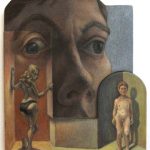

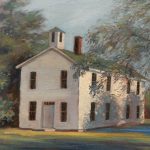


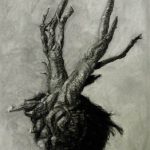





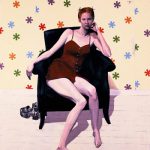
















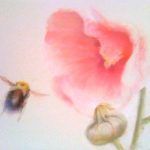




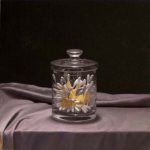

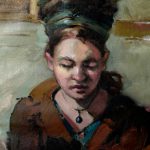

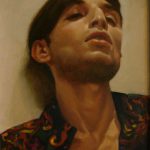

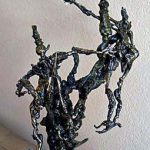
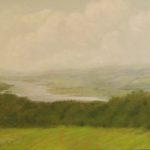
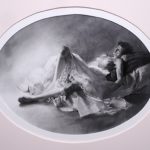








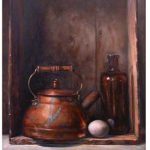










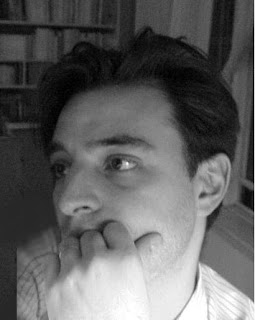.jpg)